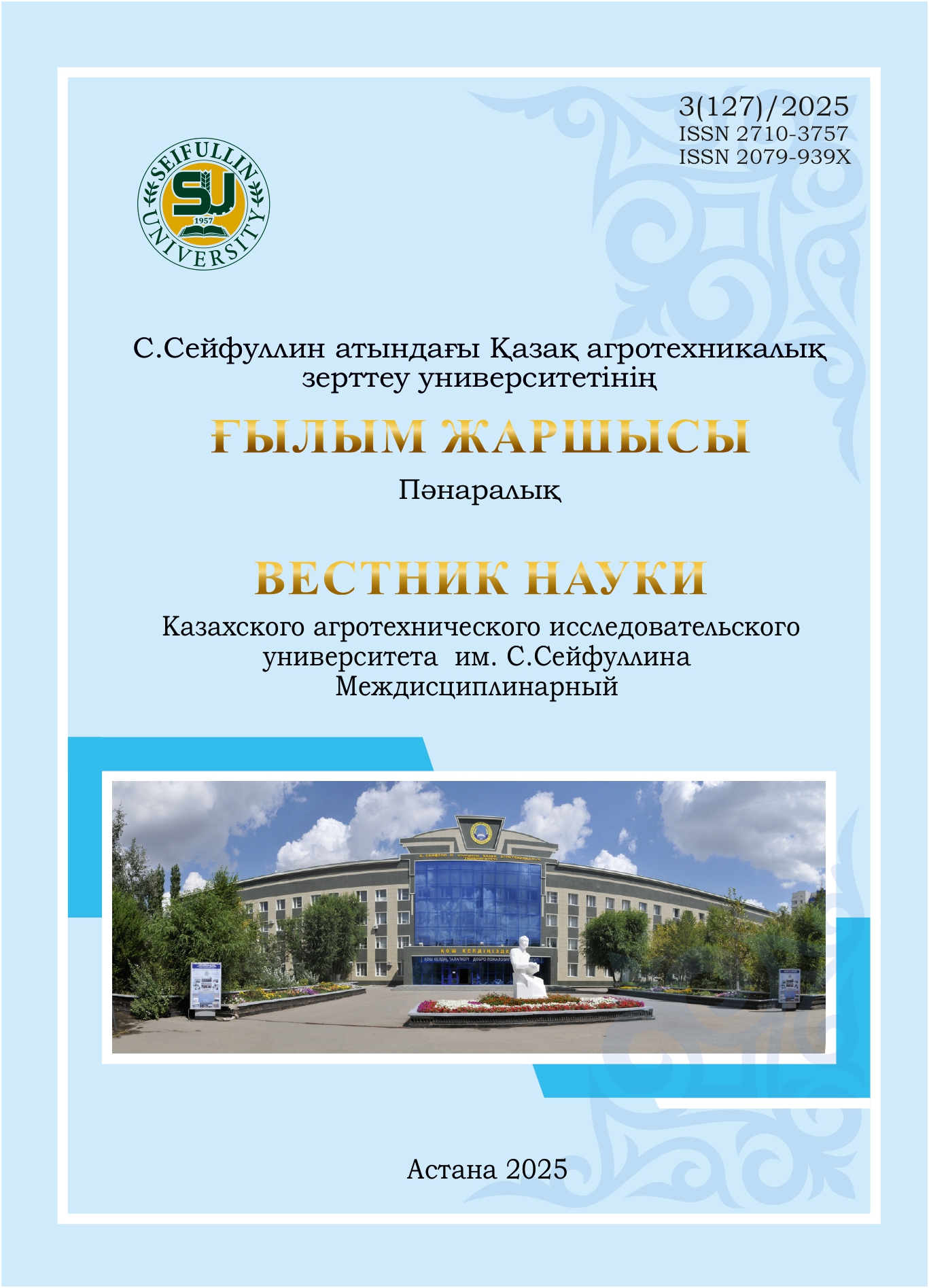Comparative peculiarities of the wool of the young kazakh kurdyukh coarse-wool breed and cross-breed young
DOI:
https://doi.org/10.51452/kazatu.2025.3(127).2030Keywords:
wool; length; comfort factor; crossbreed; fineness.Abstract
Background and Aim. The article is devoted to the study of the physical and mechanical properties of the wool of purebred young Kazakh Kurdyukh coarse-wool (KKG) sheep and their crossbreds obtained from crossing with rams of early-maturing meat breeds Dorper (D) and ¾-blooded Australian White (AB). The purpose of the study is to determine the main properties of the wool of the experimental animals. The meat productivity of crossbreds of different generations of the South African Dorper breed has been relatively well studied. However, the productive features of young animals obtained based on the use of AB genotypes and domestic breeds have been scarcely studied. At the same time, the characteristics of wool productivity in crosses of these breeds have not been studied at all, which determines the relevance and novelty of the research presented in this article.
Materials and methods. The study used wool samples collected from key topographic regions of the body (side, thigh, and back) of the experimental sheep from the Razakhun and Medkhan farms. The studies were conducted using the OFDA-2000 Australian wool analyzer (Wool Group Pty Ltd.) in the wool quality analysis laboratory of the K.U. Medeubekov Research Institute of Sheep Breeding, a branch of LLP "Kazakh Scientific Research Institute of Animal Husbandry and Feed Production".
Results. In the wool of the Australian White x Kazakh Kurdyuchnaya coarse-wool and Dorper x Kazakh Kurdyuchnaya coarse-wool crossbreeds, an increased content of thinned fibers was found, as evidenced by the comfort factor values, which ranged from 84.5% to 97.5%. In purebred young animals, this parameter ranged from 44.8% to 60.7%. The wool of the crossbreeds was comparable in absolute thickness and its coefficient of variation, compared to the purebred counterparts. The average wool thickness of the ABxKKG and DxKKG crossbreeds varied between 20.5 and 24.6 microns, and the coefficient of variation (Cv) of the fibers varied between 21.1 and 23.3%. The corresponding values for purebred counterparts were 29.8-35.2 microns and 38.1-41.0%.
Conclusion. The results of the study showed that the use of the Australian White and Dorper genotypes of foreign selection on the Kazakh fat-tailed coarse-wool ewes had a positive effect on improving the wool quality structure of the resulting offspring, increasing the proportion of valuable downy hair and the uniformity of wool fibers. The resulting offspring can be used in practical breeding programs to enrich the gene pool of domestic breeds and enhance both meat and wool productivity of fat tailed sheep. The high proportion of fine down fibers, which effect vely preserve body heat, contributed to the high adaptability of crossbred young animals to the conditions of pasture-based wintering in the first year, which is of great practical significance.

